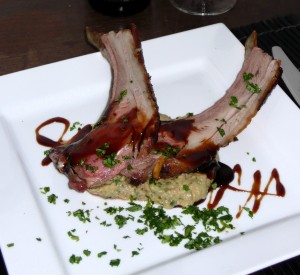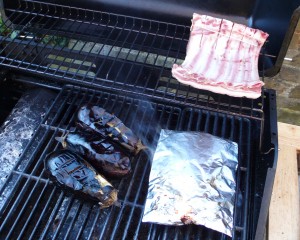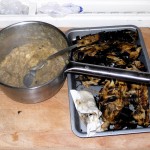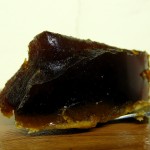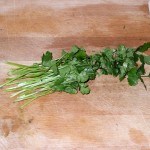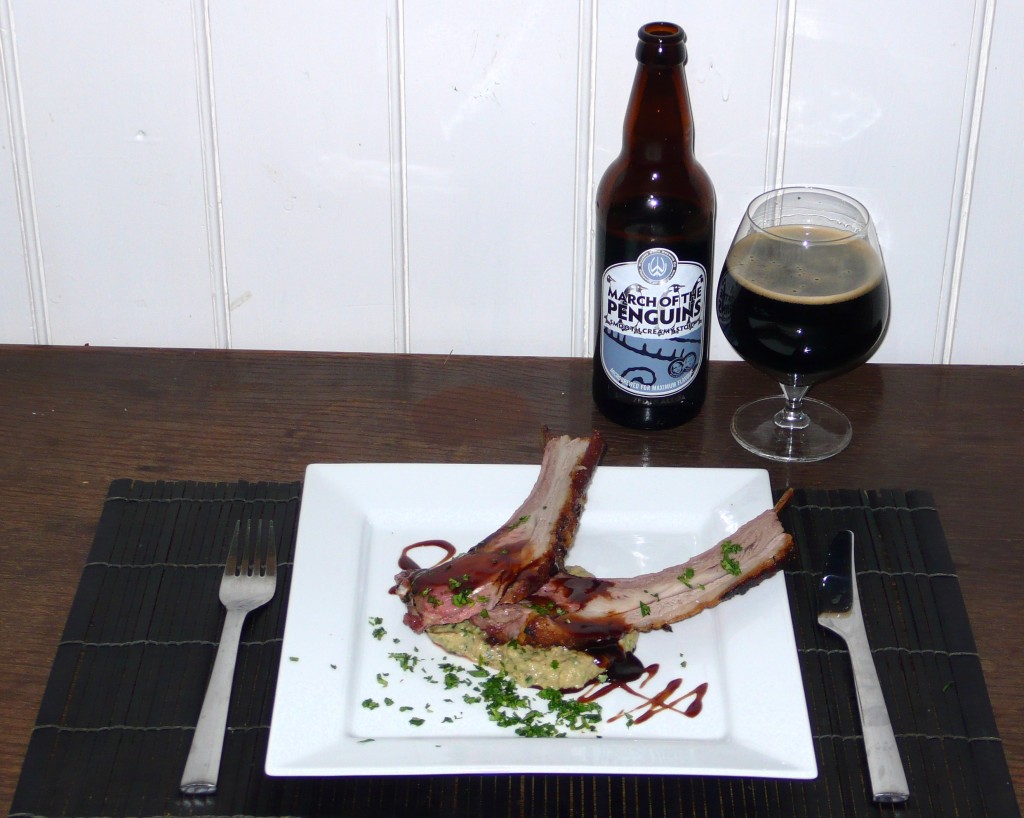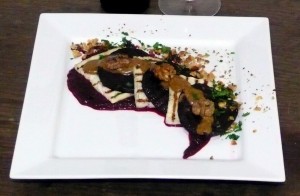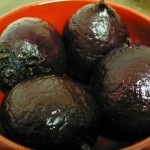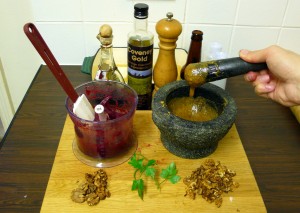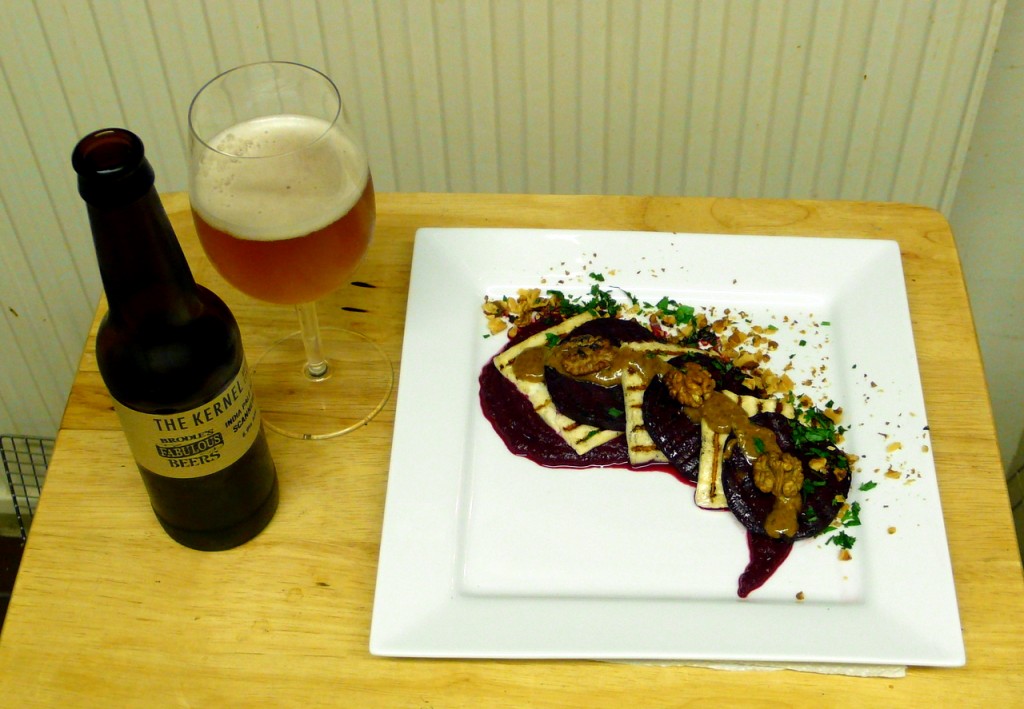This recipe has been devised in response to Hugh’s “Three Good Things“ challenge. I am, of course, endeavouring to add beer as a sneaky fourth “good thing”. I’m adding it as a subtle addition — much the way the chefs in the TV episodes will gladly include brilliant oils, vinegars, stocks, and herbs without giving them a headline credit.
Who doesn’t have a collection of dried pasta in the cupboard? Starting with a bag of dry pasta a variety of starchy dinners can be ready in about 15 minutes. Butter and garlic. Mushroom and bacon. Grilled vegetables and chopped tomato. Always a grating of pecorino romano or similar. An endless list of simple favourites… however I’m taking a different tack: pasta salad! Perhaps it is a bit naff? I’m going to try to avoid the soggy gloopy sort of salad you may buy in the supermarket when you’re in a hurry and really bring my three ingredients together in a perfectly balanced taste sensation. Well, that’s the plan.
Beer Mayonnaise
This is the hardest part, but I assure you making a quick mayonnaise is dead easy really. I prefer to stick to a recipe that uses two or three yolks, as I find a whole egg usually produces more mayo than I ever need. Using just yolks also gives you a nicely warm coloured mayonnaise. This is also where I’m adding my sneaky dash of beer, I’m using an incredibly zesty, hoppy golden ale for this that adds an intriguing zing to the flavour. There are many such ales around these days as the style is very popular. I’m using Revival from Moor Beer Company, it’s a great beer and this year it won the “beer of the festival” award at a CAMRA beer festival I help out at (I order the beer!) The Moor brewery is located in Somerset and Justin, the owner and brewer, takes special pride in producing seriously flavourful beers with a focus on naturalness and freshness. Anyway, on the the recipe…
- yolks from 3 small, or 2 large eggs — deeper the colour the better!
- mine come from a stand out the front of a house just up the road
- “sufficient” light flavoured oil
- I ended up using about 220g of plain sunflower oil
- 50g extra virgin olive oil or cold pressed rapeseed oil
- I’ve used rapeseed oil from our nearby Coveney Farm
- 2 tsp vinegar
- cider or white wine is best
- some hoppy golden ale
- I’ve used about 5 tbsp of Moor Beer Company’s “Revival”
- You could tweak this by using different sorts of beers too, a rich double-IPA would work well too I think.
- ground white pepper— to taste
- about 5 pinches in my case (just a tiny bit of what’s in the photo!)
- salt— to taste
- about 3 pinches in my case (just a tiny bit of what’s in the photo!)
Separate the egg yolks into a large mixing bowl and, whisking continuously, gradually drizzle in the 50g of flavourful oil. When done whisk in the vinegar. Then continue with a drizzle of the lighter oil until you have a very thick mayonnaise that will form peaks, wobble a little when tapped, and stick to a spoon held upside down, etc. Whisk in beer a tablespoon at a time until a thick creamy texture is achieved, akin to a thick salad cream.
Finally add in white pepper and salt to taste, be conservative with the salt at this stage as the smoked salmon in the salad will be quite salty already. The flavour was pretty good, with a definite beery and hoppy hint to it. I’d be interested to try this again with something with more body, the Moor Hoppiness perhaps or a BrewDog Hardcore IPA.
Egg and Smoked Salmon Pasta Salad
- 1 pack of fusilli cooked, drained and cooled
- very important that this is “al dente” or your pasta salad will be a soggy mess
- mayonnaise (from above)
- Add as much as you feel is sufficient. I used it all… but it was probably a little too much. Any leftover mayo could be used another day. It would probably be excellent with some beer battered fish.
- 1 small red onion — very finely chopped
- half a larger onion in my case
- 1 small garlic clove — chopped and crushed to nearly a paste
- 200g of sliced smoked salmon— roughychopped
- if you can find them smoked salmon “pieces”, aka “offcuts”, are just as good and often much cheaper
- 4 boiled eggs — cut into 8ths or 12ths
- 3 spring onions — finely chopped
- a few sprigs of parsley — finely chopped
When I cook a pasta like fusilli I boil it in loads of water with a generous dose of salt, but I don’t bother with oil in the water (it never seems to do anything but make the pan harder to clean). When cooked I turn it out into a colander, drain well, drizzle with rapeseed oil, and toss until the pasta is evenly oiled. Set it aside to cool to room temperature, you can then refrigerate it for later if desired. In fact this is a recipe I’d typically prepare from last night’s leftover pasta.
Reserve a few prettier bits of boiled egg, some pinches of chopped parsley, a couple of tablespoons of green chopped spring onion, and a few bits of smoked salmon for garnish. Combine everything else except the mayonnaise in a bowl, use your hands to ensure the smoked salmon is well broken up and distributed.
Finish off by using a large spoon to stir through the mayonnaise, ensuring everything is well coated. Move the salad to a presentation bowl, scatter over the reserved garnish ingredients, and complete with a sprig of fresh parsley. Done! This will fill the bellies of about 4 hungry people, or stretch to 6 with some sides, or 8 or more if provided as a side-dish.
Serve with a a glass of the zesty golden ale used in the mayo. This is a beaut summer brunch on a lazy Sunday morning, or late lunch for the lazier. To make more of a meal of it serve as a salad alongside something grilled on the BBQ — salmon steaks perhaps?
When I do this again, which I certainly will, I’ll probably add something else to just lift it up a bit. Some roughly chopped capers perhaps, or gherkin. It could do with a little extra *zing*.
